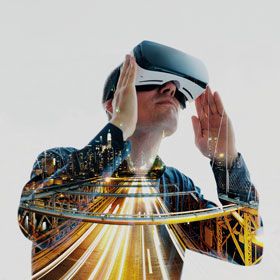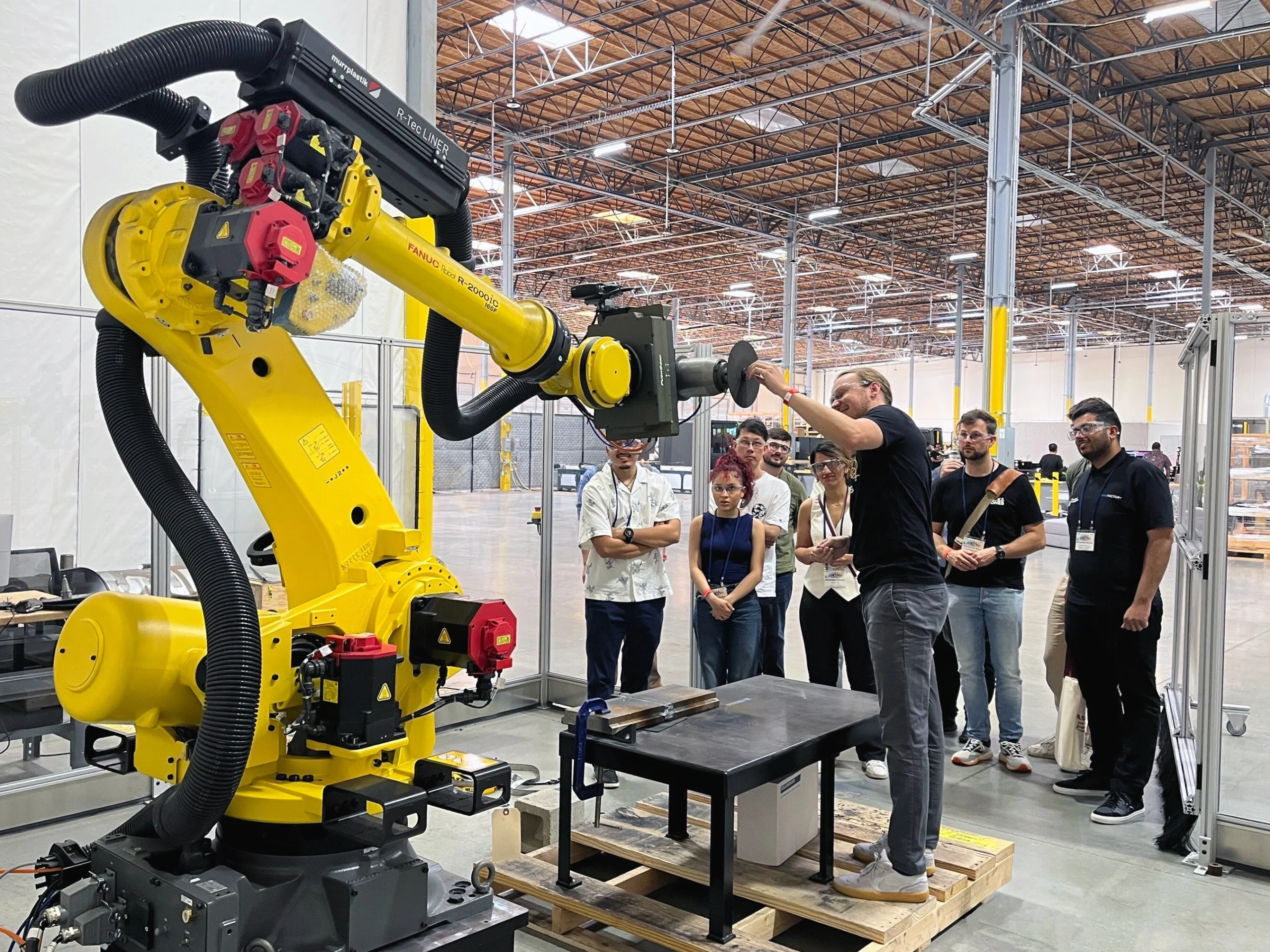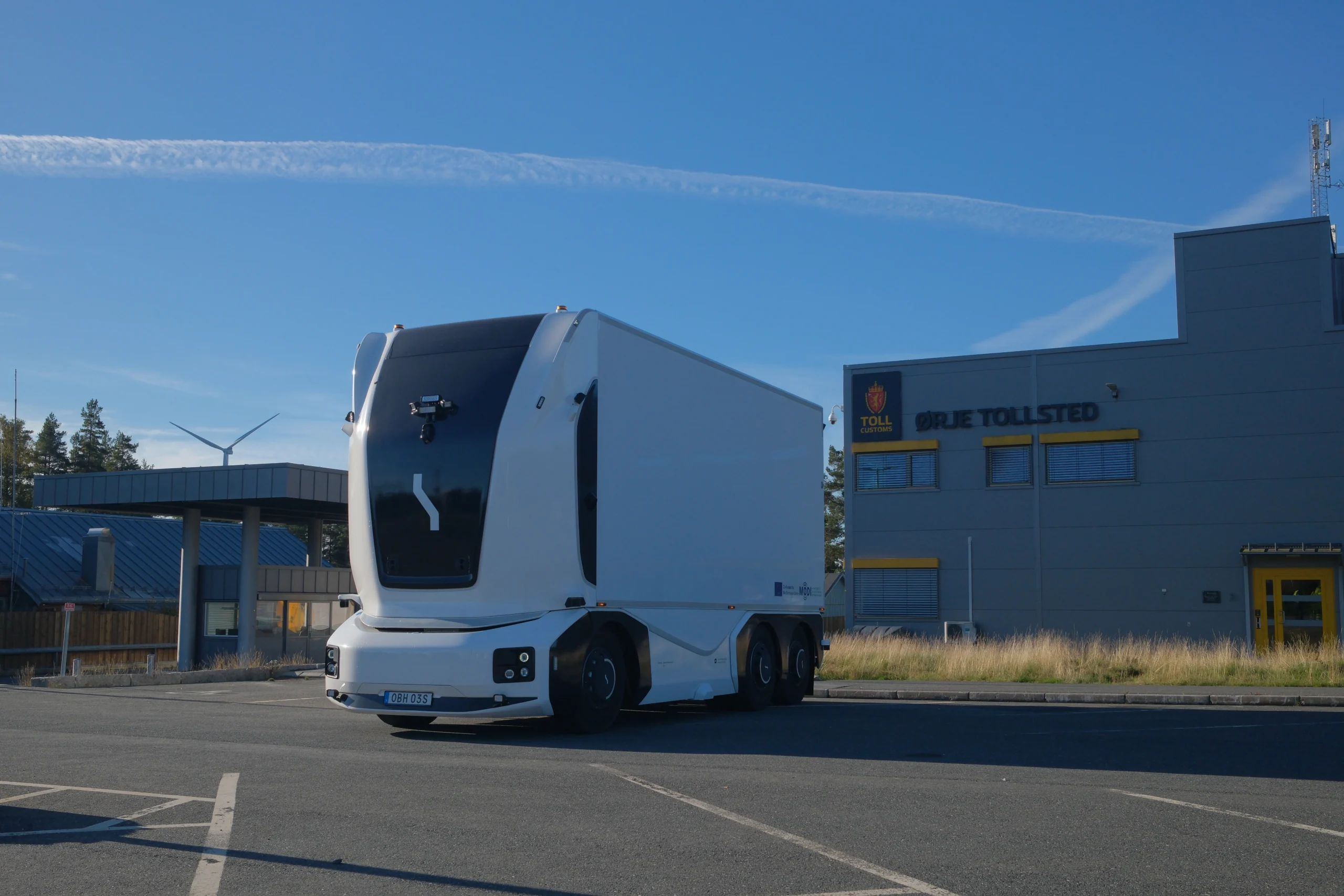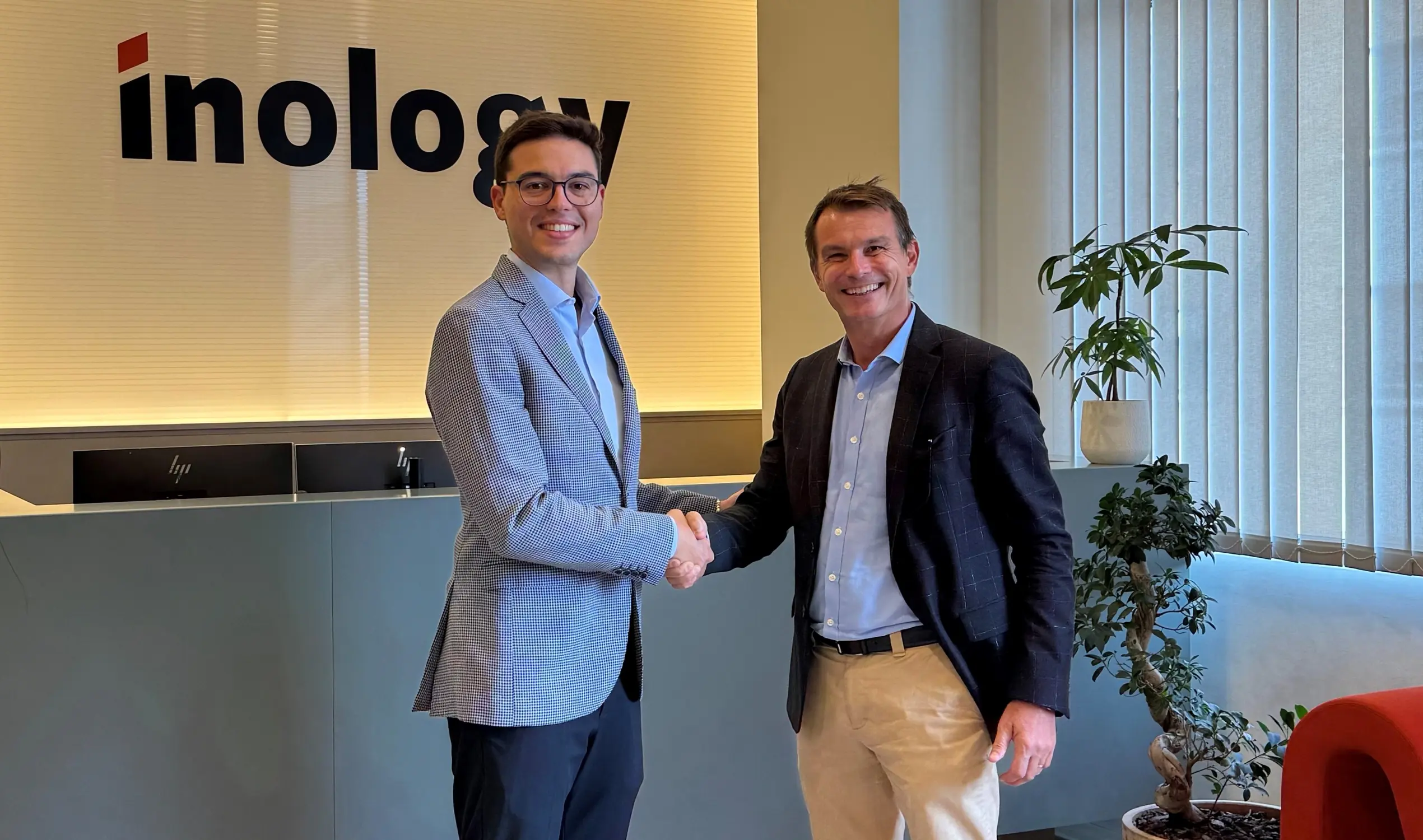The reality behind the virtual world

John E. Kaye
- Published
- Home, Technology

Tanya Laird is at the forefront of emerging creative technology spanning games, film, TV, comics, music, immersive theatre, transmedia, VR (virtual reality), AR (augmented reality) and AI (artificial intelligence). She is the creator of the VR Writers Room and the co-organiser for the world’s largest VR and AR focused meet-up group Augmenting Reality. Laird is also a trustee for both the World Youth Organisation and UN Influx, the winner of a Women in Games Award and the Vice Chair of BAME in Games.
As CEO of Digital Jam, Laird drives a strategic agency whose aim is to bring together multiple industries and expertise to create a new way of looking at challenges and finding innovative strategic solutions. The firm works across the entertainment industry sectors along with the technology and new startup sectors.
The European recently caught up with her to discuss the world of VR.
What are some of the common myths associated with VR?
Tanya Laird: The most common misconception is that VR is a new industry that has emerged in the last five years since the Oculus Rift arrived. Simply put, it isn’t. It’s been around since the late 80s and early 90s when patents for the technology were submitted. This was back when sci-fi filmmakers were making films like Virtuosity and The Lawnmower Man. When the creativity of the ideas was way ahead of the technical capability to deliver. Without getting overly detailed, there have been several ‘phases’ of the VR industry and we’re currently in phase four out of five, depending who you ask, with plenty of investment and research poured into the industry over the last thirty years. VR had its watershed moment with Palmer Luckey’s Oculus Rift. Thanks to the expiration of the majority of the patents and the input and collaboration of industry veterans, such as Nonny De La Pena, the Oculus team were able to finally match the technological capability with the creative vision of what VR could, and should, be. Facebook saw the potential and the rest as they say, is history.
So once you’re past the fact that actually, the VR industry isn’t quite as new and unexplored as people might think, it brings us to the second most common myth about VR: VR means HMD (Head Mounted Display) or in less technical terms, a headset. The rather large goggle like thing that people have to put on their head, or the cardboard box they drop their mobile phone into. Again, this comes down to so many newcomers to the market not understanding the scope of the technology and the medium. VR can and has already been delivered in out of home formats at theme parks around the world in the last thirty years.
How are you able to translate VR in business terms?
TL: Right now there are a lot of people rushing to make VR content but far less understanding of the practical revenue models behind it. For many, it’s just part of their PR or marketing budget and they won’t expect to see any kind of a return on the spend. Realistically the first industry to see any real income from VR in its current form will be the games industry. Primarily because the revenue models are familiar, publishing a VR experience as an app to a mobile store of some sort. Given the games industry’s fluency with mobile marketing and driving installs, this is a relatively easy process. Alternative revenue options that have been explored in less detail but are currently being utilised include publishing to YouTube (where all uploaded videos can be tagged as 360) and making money from the advertising. Given the small number of videos currently tagged as 360, it’s a reasonable approach but as the market enlarges we’ll see more difficulty in cornering the eyeballs and the returns will get smaller. The real value of VR isn’t in looking at stand-alone executions but utilising it as part of a larger process. ‘Out of home’ executions for museums, retailers and exhibitors provide a more tangible return in terms of driving footfall through experiential.
What are the costs for a business that employs VR technology?
TL: Realistically it doesn’t have to be that expensive. There are some folks out there quoting one million dollars per minute, which isn’t practical if you want to experiment. The first thing to understand is the difference between 360 versus true VR. Are you making a 360 film where the viewer can look around but not touch, or are you making true VR where the user can interact with and influence the environment. The process for 360 is not dissimilar to film/TV production, so cost really comes down to how expensive you want it to look. At the other end of the spectrum a true VR experience requires more complex thinking and planning and development time to build the environment within an engine such as unity or unreal. As with any game development the costs end up being reflected in the final output quality, the more you pay, the better the final outcome. If you’re looking for hard numbers, you’re looking at anywhere from £25,000 for a lower-end budget experience through to £2m for a top-end luxury brand experience.
Worth remembering however, those are just production costs. The integration of VR will also need to be considered. Are you adding it to your website as HTML 5 VR or are you publishing a new mobile app? Are you providing headsets for customers to try on within your office or retail space, or are you asking them to download it at home? All these delivery methods have different price tags associated to them that should be factored in.
Where does VR stand with the marketing ecosystem as a value proposition? How are you able to measure ROI?
TL: At the moment, we’re at the early stage of mobile when it first came on the scene, everyone wanted to have an app or a mobile website but no one quite understood why, or how to demonstrate the value. With VR we’re seeing a lot of rushing to put content out there with no real call to action or driver, it’s become a marketing/PR experiment.
The real question before embarking on making any VR content should be, what is your objective and what constitutes ROI for you? As I say at many conferences and events when speaking about VR: “Just because you can, doesn’t mean you should”. VR isn’t always going to be the right or relevant solution for every business. Unless you can prove there’s a benefit, you should sit this one out and watch what others do before plunging in there. Back in the day we had a saying that still works for every campaign: ‘No Metrics: No Marketing’ in other words, if you can’t prove it, don’t do it. As an ‘empathy machine’ we see charities and non-profits using VR to drive donations and there’s tangible impact for them. For travel agents they tried putting potential customers into VR and saw an uptick in people purchasing holidays. VR might be the shiny new thing that everyone is rushing out to do, but that doesn’t mean you should unless you’ve given it some proper thought and know what you’re aiming to accomplish.
How do you interact with other vertical industries and how does this aid you?
TL: The principle of Digital Jam was to bring together cross industry expertise to drive inclusivity and representation when driving innovation. For us, the importance of including as many vertical industries as possible in discussion cannot be overlooked. As a result of our multi-disciplinary approach we have an unrivalled expertise across the technology and entertainment sectors allowing us to identify opportunities and gaps and provide insights that have helped drive millions of registered users and create entirely new lines of revenue.
Please outline any future projects planned to develop and expand Digital Jam.
TL: At present, we co-host the world’s third largest dedicated VR meet up with more than 3,600 members. We’re publishing on-going research in the form of the VR Writers Room which is focusing on the next major issue for the VR/AR industry beyond the content wars (which we’ll see emerging next year) which will be the talent gap. Right now we’re working on publishing our first major VR gaming title that will be announced next year. Our long-term focus is to nurture the VR industry providing the diversity and inclusivity of conversation needed to grow a sustainable industry.
In the short term, we’re educating as many industries and businesses as possible about the potential for VR, what it tangibly means, how to leverage it and what it should realistically cost. If you’re thinking about dabbling with VR, discuss it with someone who can outline both the risks and the potential, it doesn’t have to be with us, we’ll happily point you in the direction of any number of developers, filmmakers or publishers before you immerse yourselves.
Further information
www.digitaljamlimited.com
Sign up to The European Newsletter
RECENT ARTICLES
-
 Make boards legally liable for cyber attacks, security chief warns
Make boards legally liable for cyber attacks, security chief warns -
 AI innovation linked to a shrinking share of income for European workers
AI innovation linked to a shrinking share of income for European workers -
 Europe emphasises AI governance as North America moves faster towards autonomy, Digitate research shows
Europe emphasises AI governance as North America moves faster towards autonomy, Digitate research shows -
 Surgeons just changed medicine forever using hotel internet connection
Surgeons just changed medicine forever using hotel internet connection -
 Curium’s expansion into transformative therapy offers fresh hope against cancer
Curium’s expansion into transformative therapy offers fresh hope against cancer -
 What to consider before going all in on AI-driven email security
What to consider before going all in on AI-driven email security -
 GrayMatter Robotics opens 100,000-sq-ft AI robotics innovation centre in California
GrayMatter Robotics opens 100,000-sq-ft AI robotics innovation centre in California -
 The silent deal-killer: why cyber due diligence is non-negotiable in M&As
The silent deal-killer: why cyber due diligence is non-negotiable in M&As -
 South African students develop tech concept to tackle hunger using AI and blockchain
South African students develop tech concept to tackle hunger using AI and blockchain -
 Automation breakthrough reduces ambulance delays and saves NHS £800,000 a year
Automation breakthrough reduces ambulance delays and saves NHS £800,000 a year -
 ISF warns of a ‘corporate model’ of cybercrime as criminals outpace business defences
ISF warns of a ‘corporate model’ of cybercrime as criminals outpace business defences -
 New AI breakthrough promises to end ‘drift’ that costs the world trillions
New AI breakthrough promises to end ‘drift’ that costs the world trillions -
 Watch: driverless electric lorry makes history with world’s first border crossing
Watch: driverless electric lorry makes history with world’s first border crossing -
 UK and U.S unveil landmark tech pact with £250bn investment surge
UK and U.S unveil landmark tech pact with £250bn investment surge -
 International Cyber Expo to return to London with global focus on digital security
International Cyber Expo to return to London with global focus on digital security -
 Cybersecurity talent crunch drives double-digit pay rises as UK firms count cost of breaches
Cybersecurity talent crunch drives double-digit pay rises as UK firms count cost of breaches -
 Investors with €39bn AUM gather in Bologna to back Italy’s next tech leaders
Investors with €39bn AUM gather in Bologna to back Italy’s next tech leaders -
 Axians and Nokia expand partnership to strengthen communications infrastructure across EMEA
Axians and Nokia expand partnership to strengthen communications infrastructure across EMEA -
 Forterro buys Spain’s Inology to expand southern Europe footprint
Forterro buys Spain’s Inology to expand southern Europe footprint -
 Singapore student start-up wins $1m Hult Prize for education platform
Singapore student start-up wins $1m Hult Prize for education platform -
 UK businesses increase AI investment despite economic uncertainty, Barclays index finds
UK businesses increase AI investment despite economic uncertainty, Barclays index finds -
 Speed-driven email security: effective tactics for phishing mitigation
Speed-driven email security: effective tactics for phishing mitigation -
 Short circuit: humanoids go for gold at first 'Olympics for robots'
Short circuit: humanoids go for gold at first 'Olympics for robots' -
 New IBM–NASA AI aims to forecast solar flares before they knock out satellites or endanger astronauts
New IBM–NASA AI aims to forecast solar flares before they knock out satellites or endanger astronauts -
 AI is powering the most convincing scams you've ever seen
AI is powering the most convincing scams you've ever seen



























